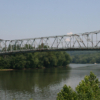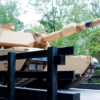System Design
Design and installation of the foundation and tower monitoring systems for GE and Siemens tubines
The clean wind energy industry must expand significantly in the next two decades to fulfill a strategy of generating 20 percent of the nation’s electricity. To provide the technological foundation for that dramatic growth, the National Renewable Energy Laboratory (NREL) is embarking on significant improvements at its National Wind Technology Center (NWTC) near Boulder, Colorado.
Engineers have installed the two largest turbines ever tested at the laboratory — a 1.5 MW turbine manufactured by General Electric and a 2.3 MW turbine from Siemens Power Generation. The new turbines allow NREL to take a significant step forward in generating its own clean electricity and meeting the Laboratory’s aggressive sustainability goals and reduce greenhouse gas emissions for its expanding research campus and support facilities. The new turbines are expected to generate twice as much energy as the NWTC uses.
The GE turbine is installed atop an 80m (262 feet) steel tower, the diameter of its rotor will reach 77m (253 feet). More than 10,000 GE turbines operate at commercial wind farms around the United States, accounting for about 50 percent of the U.S. wind energy market.
Among the questions researchers will address are the microclimate in which the turbine operates, the aerodynamics of the turbine design and the effects of turbulence on its load and performance — and how all these factors may combine in potentially unforeseen ways. The NWTC was located at the base of the Rocky Mountains to take advantage of particularly gusty, challenging winds in order to challenge turbine designs in conditions not typically seen at commercial locations.
Comprehensive instrumentation has been put into place for all aspects of performance and structural monitoring. With data collected from these experiments, researchers will be working with the wind industry to increase turbine performance, improve durability and decrease loads.
Design and installation of the foundation and tower monitoring systems for GE and Siemens tubines
Comprehensive instrumentation includes strain gages, earth pressure cells, load cells, rosette strain gages, and accelerometers
Static measurements are taken every 15 minutes, continuous measurements at 200Hz are captured based on trigger events from the accelerometers
We were tasked with design and installation of the foundation and tower monitoring systems for both the GE turbine and Siemens turbine.
Comprehensive foundation instrumentation includes strain gages attached to the rebar and earth pressure cells underneath the concrete pad of the tower foundation. Load cells installed in the bolts securing the tower to the base provide load monitoring, rosette strain gages installed on the inside of the steel tower provide strain monitoring. Last, accelerometers at the top of the tower provide acceleration monitoring used for triggering.
A Campbell CR9000X takes continuous measurements at 200Hz, and static measurements every 15 minutes. The continuous data is captured based on trigger events from the accelerometers. All data is collected automatically from the tower via cellular IP modem and imported into databases on a server at the nearby RES Americas facility. Our MultiLoggerDB software is used to manage the data including processing and outputting the data in one of several chart types.
Our MLWeb software provides browser access to other personnel within the organization without requiring installation of any application software.
A sample view of the database including Event Chart output is shown right.

 Thermoplastic Bridge Performance Monitoring
Thermoplastic Bridge Performance Monitoring